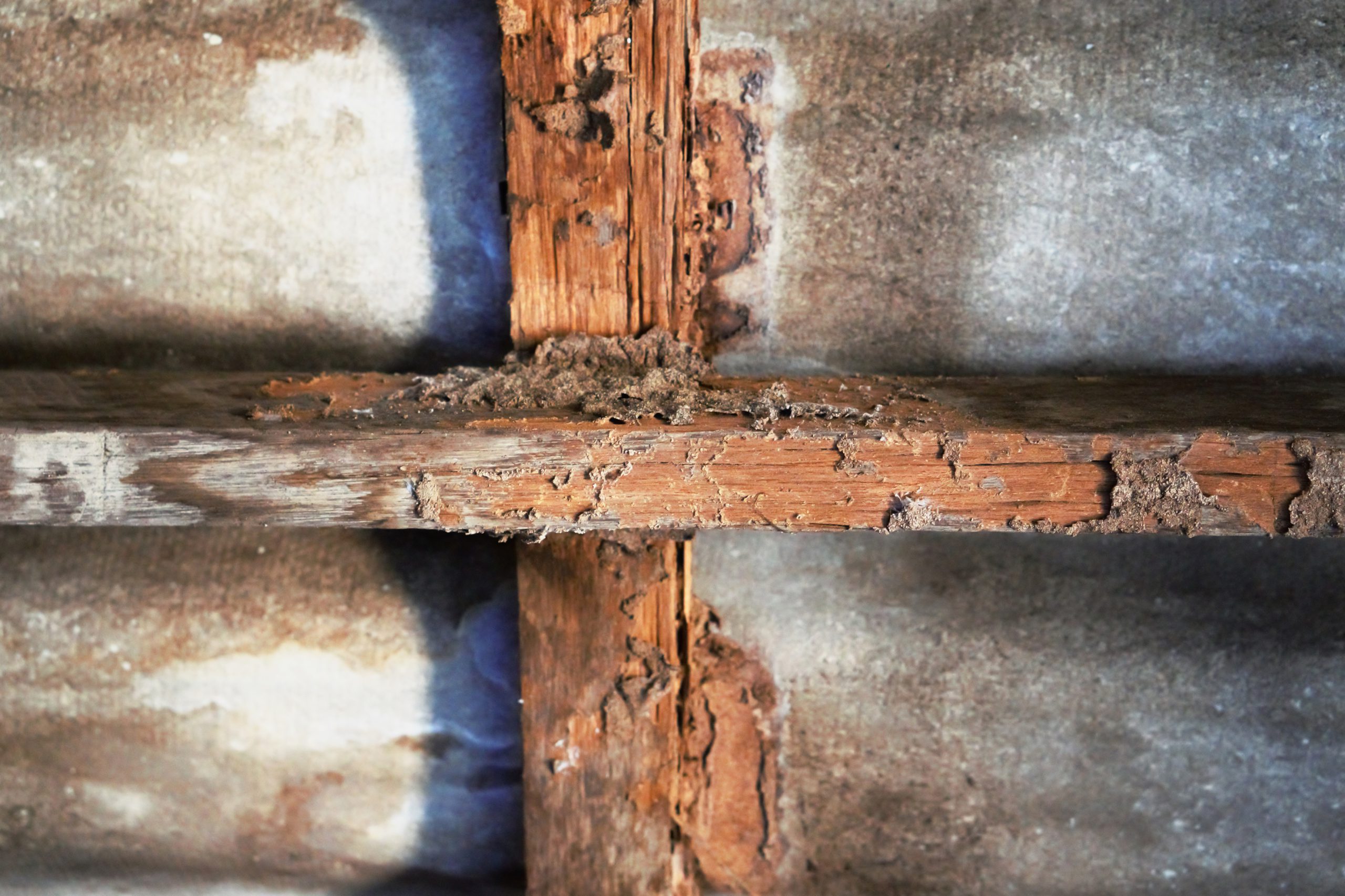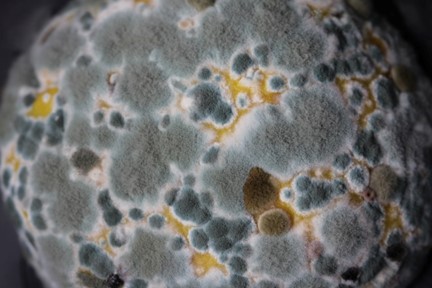
How To Identify the Early Signs of Dry Rot
Dry rot, or Serpula Lacrymans, is a term used to describe a unique type of wood rot that occurs in damp timber despite its misleading name. Dry rot is the most serious form of fungal wood decay as it attacks the parts of timber that provide strength.
All a dry rot attack takes is a small spore or cross-contamination from an already infected material. It can spread without any source of moisture as it generates its own moisture through the digestion of the timber.
Dry rot differs from wet rot as it can spread far beyond an initial water source despite both requiring moisture to germinate.
Most Common Signs of Dry Rot
Due to the potentially serious consequences, it is essential to identify dry rot at its early stages to stop rot outbreaks and minimise damage to your property. An early sign of dry rot is an unpleasant and musty smell which may lead you to look for further signs, such as.
- The first stages can look like cotton wool and may have droplets of water if in a particularly humid area.
- White with yellowing fungal growths.
- Sunken wood and any shrinkage.
- Darkening cracks in lumber.
- Large flat mushroom-shaped growths can grow on both infected wood and plaster/paintwork.
The different types of damp
There are essentially three types of damp a property can be affected by:
- Condensation
- Rising damp
- Penetrating damp
Rising and penetrating damp are caused by water ingress from outside of the property. Whereas condensation is the result of high humidity in your home where hot, moist air contacts cold surfaces.
Condensation is usually more of a problem during winter when surfaces are colder giving humid air a place to condense. However, rising damp and penetrating damp are more likely to occur during wetter weather.
Stages of Dry Rot Spread
There are 4 stages in the common dry rot fungus lifecycle, and it may be useful to understand them to help diagnose if your problem is with dry rot.
Spores
In the beginning, dry rot starts as spores that are inactive until they contact timber and enough moisture to begin to germinate. Spores will usually become active when the moisture content is 20%.
Hyphae
Once the spores have found the ideal environment they will grow as hyphae and begin to break down the timber. These hyphae are identified by fine white tendrils that allow the fungus to penetrate and grow inside and outside the wood.
mycelium
The hyphae grow and combine to become mycelium – a cotton wool-like fungal body that quickly spreads to new timber. This is the vegetative state, and it is when the fungi spread aggressively in search of timber.
Sporophores
The final stage is the fruiting body as it grows into a mushroom-shaped body that produces dry rot spores. These spores are released from the surface and are transmitted through air currents to other parts of your property. This stage prolongs the life of the fungus as it essentially begins the lifecycle in another area that has the optimal conditions.

Why Does Dry Rot Occur?
Humidity arising through condensation, rising or penetrating damp that causes timbers to reach a moisture content of 20% or above. These conditions are perfect for the growth and spread of dry rot and it can affect all buildings from old to new.
Dry rot spores will often be found all around us and in most buildings without causing any problems for the most part. Unless there is an underlying issue of damp which causes the right habitat for the spores to germinate most property owners will not have any issue. Diagnosing the underlying issue and correcting both the dry rot infestation and the cause of damp is key to eradicating any dry rot attack.
How To Know If It’s Dry Rot or Wet Rot?
This is a question that we get asked a lot when doing surveys and it is one we also must ask ourselves when diagnosing a property’s timber decay issue. Both dry rot and wet rot are wood-destroying fungi, but they are both fundamentally different types of fungi. If you think you have seen signs of rot on timber in your home in Cambridgeshire, we recommend you contact our team of professional experts to properly diagnose and treat any potential issue that can arise.
Both types of rot can cause structural damage to your property, however, dry is the more serious concern as it can spread quicker and destroy more timber. Wet rot is the more common wood decay fungal growth, but it is mainly constrained to areas of damp wood. One of the main differences between wet and dry rot is wet rot requires a moisture content of around 50% to grow, whereas dry rot can thrive with a moisture content of just 20%.
Please read our quick wet rot guide if you think you have a wet rot issue.
Is dry rot dangerous?
Of the two timber fungi – wet and dry rot – dry rot is by far the most dangerous. It can not only compromise the structural integrity of a property but the underlying issue of damp that causes rot can harm your health.
Property damage through dry rot
Dry rot can aggressively attack timber in relatively low levels of moisture due to it being able to generate its own moisture. Dry rot can spread through damp brickwork and plaster which means it can spread through a building with ease. It is difficult to treat and can lead to complete timber and brickwork failure and collapsing.
is dry rot bad for your health?
There is no evidence that dry rot or its spores contain any toxic chemicals or compounds, so it is not directly a risk to your health. However, dry rot problems in general usually mean that there is an underlying problem of damp in a building. Rising damp, penetrating damp and condensation in your home can elevate the risk of people who suffer from respiratory health problems.

Dry Rot Treatment and Prevention
Prevention is always better and cheaper than cure, so it makes sense to understand how you can treat dry rot. This generally means ensuring the building remains free of damp and dealing with it if and when it occurs.
- As dry rot is caused by a higher than usual moisture content it is important to thoroughly inspect your home, inside and out, to find where the damp is occurring. APP Protect are damp specialists and we provide honest treatment plans across Cambridgeshire to truly get to the bottom of any dry rot in your property.
- To prevent damp problems in your home it is wise to make sure your building has the required damp proof treatment.
- If your property suffers from condensation, then this could heighten the risk of dry rot germinating. If you think you may have a condensation problem then please have a read through our condensation guide.
Contact Our Dry Rot Specialists in Cambridgeshire
First, a dry rot survey will need to be carried out by our highly experienced dry rot specialist team to make sure a dry rot outbreak is diagnosed correctly, and the course of treatment is right. You will receive a full and detailed report that will outline all the findings of your rot problem and the suggested ways to proceed so you are kept fully aware of what is happening.
A damp survey will also be completed to identify the source of moisture and if rot is present. This will detail what the damp problem is exactly and the best way to eradicate it and prevent it from recurring.
We will need to have access to the infected wood so our technicians can carry out repairs or remove the infected wood completely.
This means removal of plasterwork, floorboards, etc. to make sure we get to all the dry rot issues.
Replacing the damaged timbers and ensuring the affected area is structurally sound again comes next.
The masonry and timber surrounding the affected area will need to have the required fungicidal treatment applied.
Reinstatement of the walls and ceilings that were removed in the process will finish the job and halt dry rot spread.
FAQs On Dry Rot Early Signs
Q1. What are the signs of dry rot?
Signs of dry rot usually include a musty, damp odorous wood darker than the surrounding areas. The wood will be cracking and shrinking, and it feels dry and brittle to the touch. You may also see white or grey cotton wool growth on wooden surfaces – this is dry rot. Mycelium strands (silver-grey in appearance) can be seen spreading across materials. These are all tell-tale signs indicating the presence of dry rot.
Q2. How do I tell if my home has dry rot?
Wood damaged by dry rot often has cuboidal fractures. Mushroom–like fruiting bodies releasing dry rot spores may also be visible indicating an advanced rot outbreak. Another sign is the musty smell of soil or mushrooms – another common symptom of dry rot.
Q3. What is the difference between dry rot and wet rot?
The difference between dry rot and wet rot is primarily in their cause and how they affect wood. Excess moisture from a direct water source makes the wood feel soft and spongy to the touch and causes wet rot often with localised effects. In contrast, dry rot spreads far from the source of moisture via mycelium strands and affects the wood even in drier areas. It becomes dry and brittle, and the rot fungus may weaken the structural integrity of a building.
Q4. an you spot the signs of dry rot without a professional dry rot survey?
Yes, it’s possible to spot the signs of dry rot without a professional dry rot survey, though a survey might provide a more comprehensive diagnosis. Homeowners can look for early signs such as a musty smell, dry and brittle wood, and visible fungal growth. Sporophores are big mushrooms that signify an infestation.
We’re Ready To Help You
Please get in touch with our friendly team today and we can get the ball rolling on your project sooner than you think.
